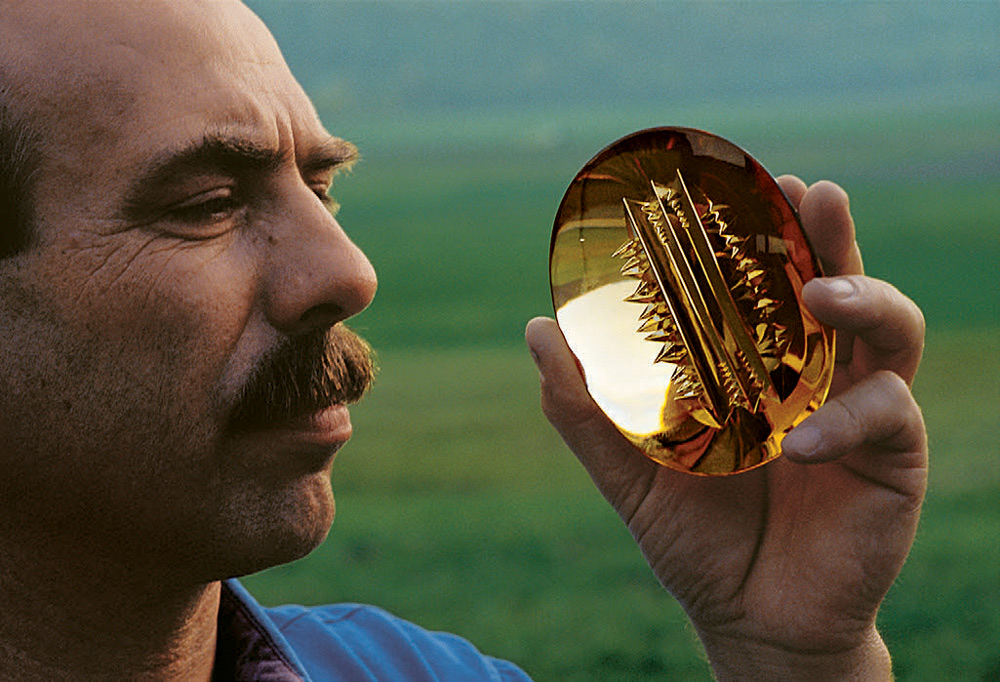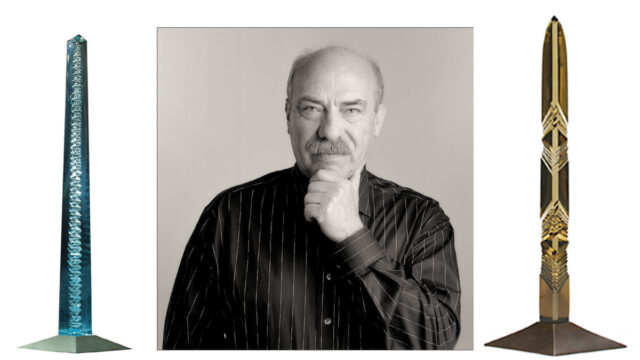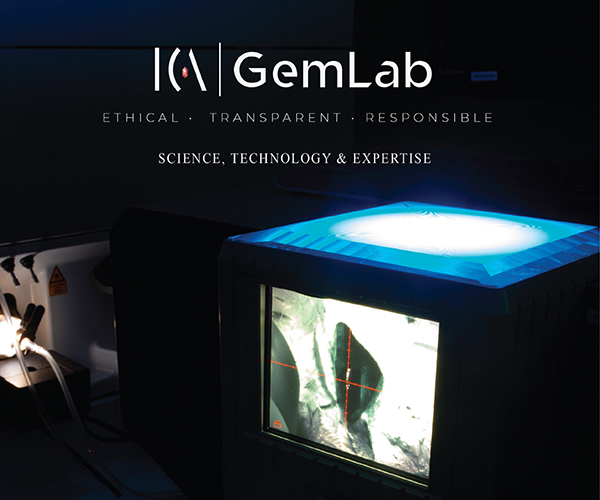A Personal Encounter with a Gemstone Legend
In the realm where art meets gemstones, few names shine as brightly as Bernd Munsteiner. Renowned for his revolutionary approach to gemstone cutting, he transcended the traditional boundaries of lapidary art to create awardwinning and breathtaking gem sculptures that blur the line between mineral and masterpiece.
This bright light went out, sadly, on June 6, 2024, when Bernd passed away from cancer, surrounded by his family. He was 81. His son, Tom Munsteiner, a talented gem artist in his own right, died of cancer on December 28, 2023 at the age of 54. Tom’s wife Jutta and their son Philipp are now at the helm as they continue the remarkable Munsteiner legacy.
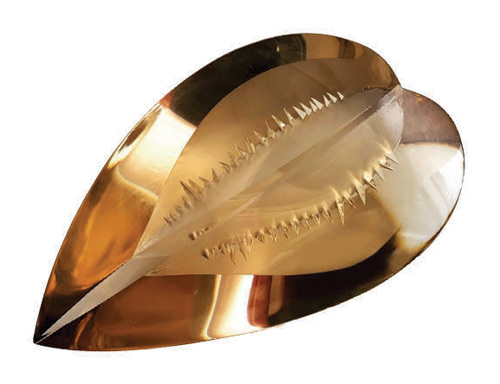
Instead of a formal obituary listing Bernd’s numerous accolades, awards and contributions to the gemstone world, which you can find in every major gem and jewelry publication and which have found homes with collectors and in museums around the world, I would like to share a personal story about my wonderful encounters with this true legend over the past couple years. A story that is not unlike that of so many others who have been fortunate to meet this incredible man.
It all started on a hot and sunny afternoon when I decided to change my usual route and walk down some steep rocky old steps from Mid-Level West to my Sheung Wan design studio in Hong Kong. These old pathways, known mostly to the locals in their 80s, date back to my grandmother’s time. On this day, I was surprised to find a new small fancy-art bookshop in an area that was rapidly becoming gentrified. I ventured in and found a world of attractive coffee table books. Most were visually stunning, yet often more decorative than informative.
Among the glossy displays of books, a monolith of a transparent green stone against a white background caught my eye. At first glance, I wondered if it was a Donald Judd piece, with a carved-out column resembling a modern Brancusi sculpture. But the cover read Bernd Munsteiner: Reflexionen in Stein in crisp Helvetica font. Intrigued by this beautifully designed book, I picked it up. With my non-existent German, I could only guess that Stein meant Stone. With its color, was it an emerald, or maybe tourmaline, or even glass? Captivated, I couldn’t take my eyes off it. That was my first encounter with Munsteiner’s work, albeit in print. I was transfixed.
Fast-forward a decade. After years of political turmoil and a severe downturn in Hong Kong in 2020, I returned to the United Kingdom, where I had launched my jewelry company years earlier. I packed up my life and business and set sail for my new and hopefully permanent home. Through my network of gem friends, I was introduced to Ingo Henn of Henn of London. In 2022, as the world began to reopen after Covid, Ingo told me about his family business based in Idar- Oberstein, the heart of Europe’s cutting sector.

One of the most important cutters from this region was Bernd Munsteiner, who created the famous Dom Pedro, now in the Natural History Museum of the Smithsonian Institution in Washington DC. Seeing images of his creations brought back memories of that vibrant carved green tourmaline on the cover of the book I saw in Hong Kong so many years ago.
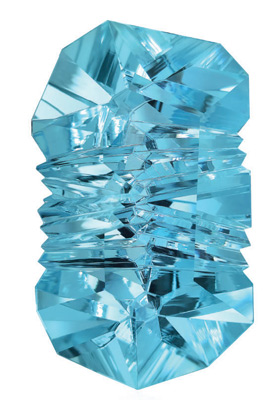
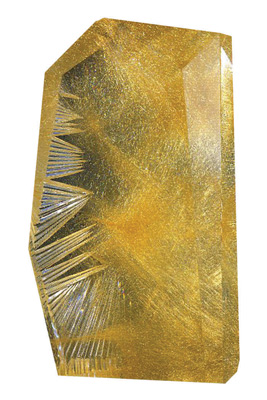
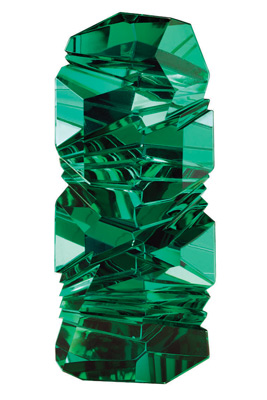
In the spring of 2022, Ingo showed me a few gems that had been cut by Bernd and Tom Munsteiner. Although I was not yet in a position to invest in new stones, I couldn’t pass up the opportunity to purchase a few of Bernd’s important pieces. I insisted on one condition, though; I wanted to meet the artist. To my delight, a meeting was arranged, and within weeks, I was on my way to see this gem legend.
In July 2022, I visited the Munsteiners at their studio in Stipshausen, a small town near Idar-Oberstein. Bernd’s warmth and genuine kindness affected me deeply. He was really down to earth for someone with so many amazing accomplishments. He was willing to teach, share, exchange ideas, and was open to being a partner in the future with a virtually unknown designer.
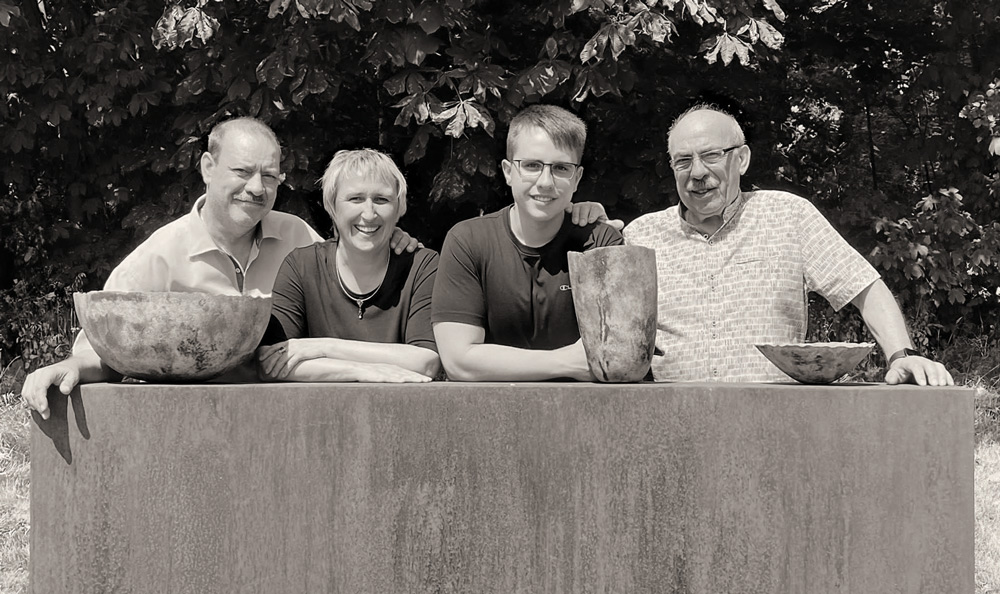
Tom showed me around their immaculate workshop, with staff that have been with them for generations, and proudly presented his Guinness Record for the Largest Cut Paraiba Tourmaline. And, Jutta’s incredible smile will stay with me forever as she showed me her pieces created with such deep love and understanding of the Munsteiner gemstones. They showed me trays of gems of many sizes; some were crystals with inclusions, amethysts, quartz and other less expensive materials.
Their focus is on the artistry and how they manipulate the material, creating a dialogue with natural inclusions and patterns. Bernd and Tom shared the inspiration behind their pieces, the story of their decades-long journey, including their collaboration in creating the very important agate mosaic panels for a 400-year old church. Father and son worked together, with shared ideas. You can see Bernd’s influence and the strength of Tom’s personality in their later works.
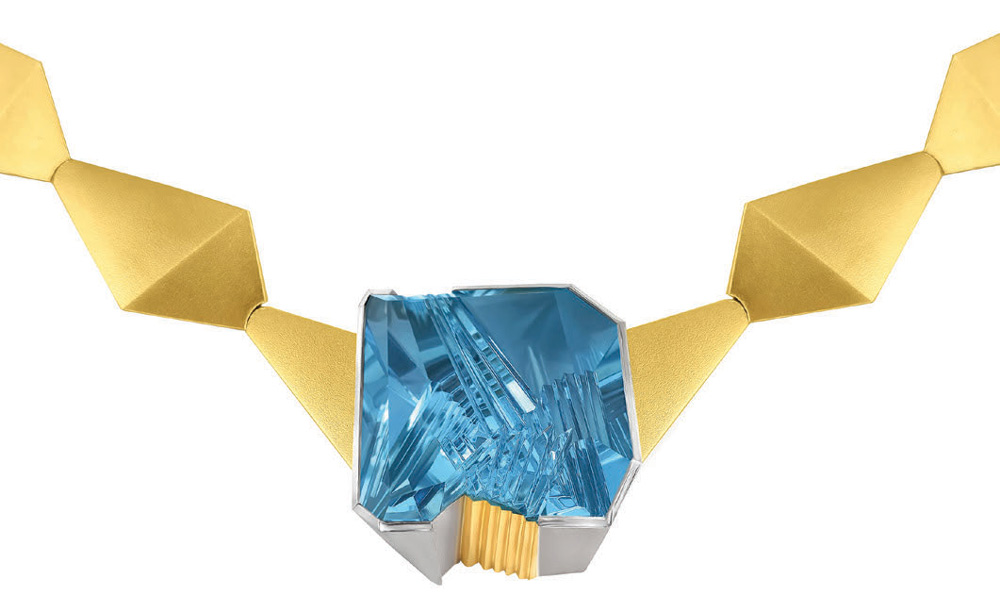
Munsteiner is a multi-generational design house. Bernd continued his father Victor’s legacy, who was a skilled gem cutter as well, yet he carved out his own path. Tom then followed, and his son Philipp began winning gem cutting awards already in his teens. Throughout the generations, there is a strong thread, steeped in modernism.
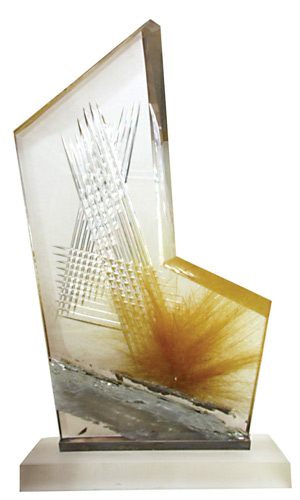
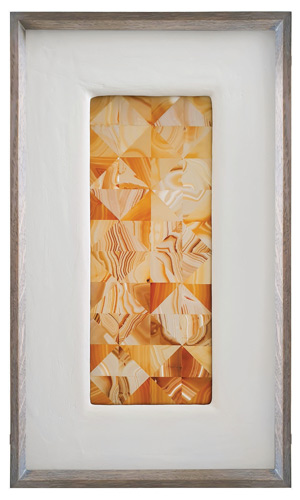
While others might want to copy their style, Bernd’s work has a spirit to it, much like seeing a sculpture and walking around it in person; you feel the artist at work, and you follow his thinking. He treated gems as an experience, with subtlety and uniqueness, each as an individual performing its own, and living its purpose. Size did not matter. I saw displays ranging from the size of a room to whisky tumblers to gems destined to be placed in fine jewelry. There’s a strong mid-century influence, which perhaps has something to do with the 1950/60s stylistic sensibility that is so ingrained, leading to his breakthrough Fantasy Cut and Freeform Cut in the 1960s that liberated the way gems are to be seen, used and lived with.

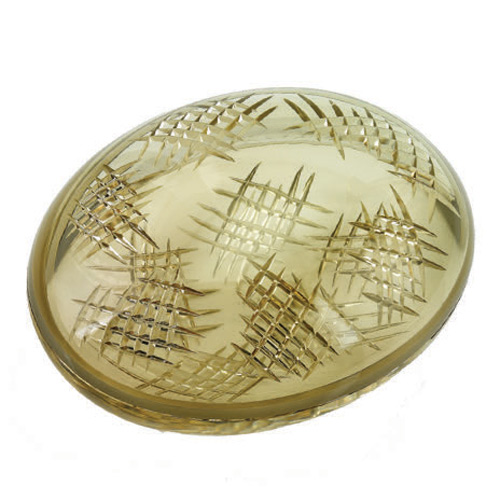
Bernd Munsteiner has left an indelible mark on the world of gem cutting. From an early age, he exhibited a keen interest in challenging the conventions of gem cutting (as with Philipp since childhood according to Jutta). Bernd sought to challenge the mundane and conventional commodities standards.
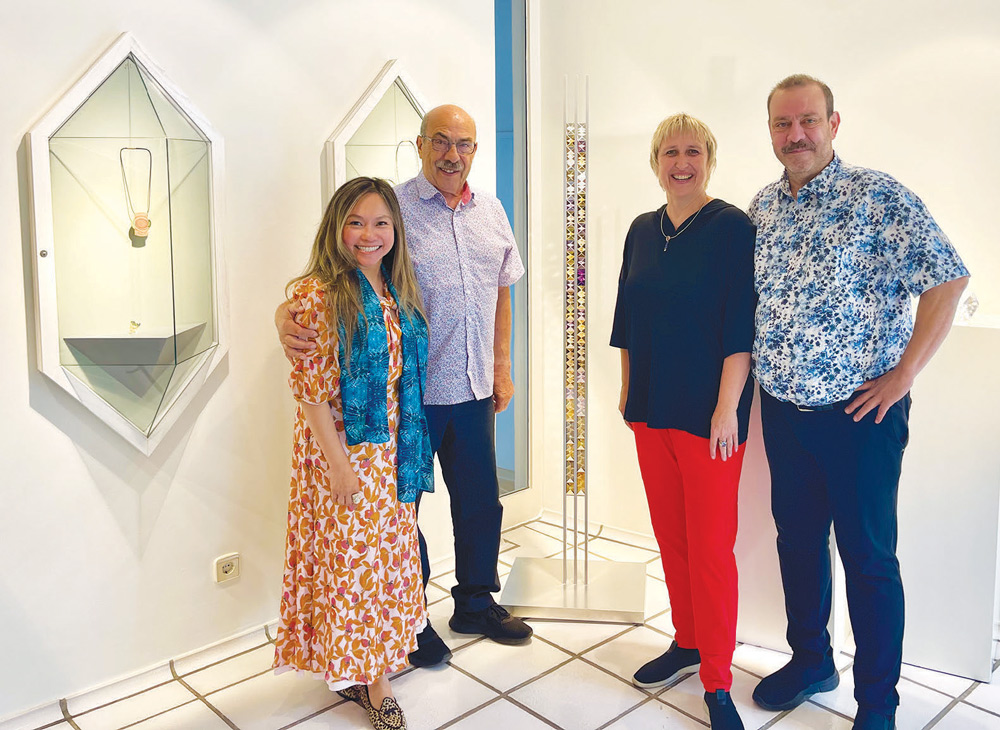
Not only did he innovate, he literally turned stones upside down to create blockbuster rock stars for the history book. Although a gentle soul as I ever encountered, he was bold and daring, measured but playful, and he sought to create something that tantalizes and excites with light and color in unprecedented ways.

Departing from the symmetrical facets of traditional gem cutting, Bernd embraced asymmetry and irregularity. Bold and avant-garde, his designs emphasize geometric precision and the interplay of light and shadow. His cuts revealed the gemstone’s natural characteristics in new dimensions, enhancing its beauty and allure. Essential to his approach was a deep understanding of optics and his ability to manipulate a gem’s internal structure to maximize its brilliance. By carefully planning of each cut and facet, he transformed rough gemstones into dynamic works of art that resonated with depth and emotion that begs the eyes to explore.
Clearly, the Munsteiners treat gemstones as materials for art, not merely as commodities. Jutta has been their resident jewelry designer for decades. Highly sensitive and charged with German aesthetics, she offers one of the sleekest points of view of the gem and elegantly transmits the family gems to the jewelry world. This is where the alchemy and unity of being part of the family really translate into designs that elevate and transport her own visions of modernism into a different realm, where these pieces can be felt, worn and interact with the body. She creates everything from full bodice-size large necklaces to singular pieces that simply enhance the narrative.
I left our visit with a profound sense of wellness and love. I fondly remember that Bernd walked me to my car, opened the door and then waved goodbye. That memory is still fresh in my mind. I will treasure the autographed books and the Dom Pedro scarf that he draped around my neck that fine summer day. I’m humbled to actually own gems created by Bernd Munsteiner.
The years following, I kept in touch to learn more about their work. I met Jutta and Tom in Geneva once more in 2023, the last time I saw Tom. Nine months after I came back from the visit to Stipshausen, Bernd replied to my email question asking about the design of the Dom Pedro, and what does “Inside Selecting” really mean. He said, “The cut itself can be compared to music. Different highs and lows are playing together and reveal an inner beauty. Attached for you is the Lapidary Journal of November 1995. The article published by Si and Ann Frazier should explain the whole story.” Those were the last words I had from him.
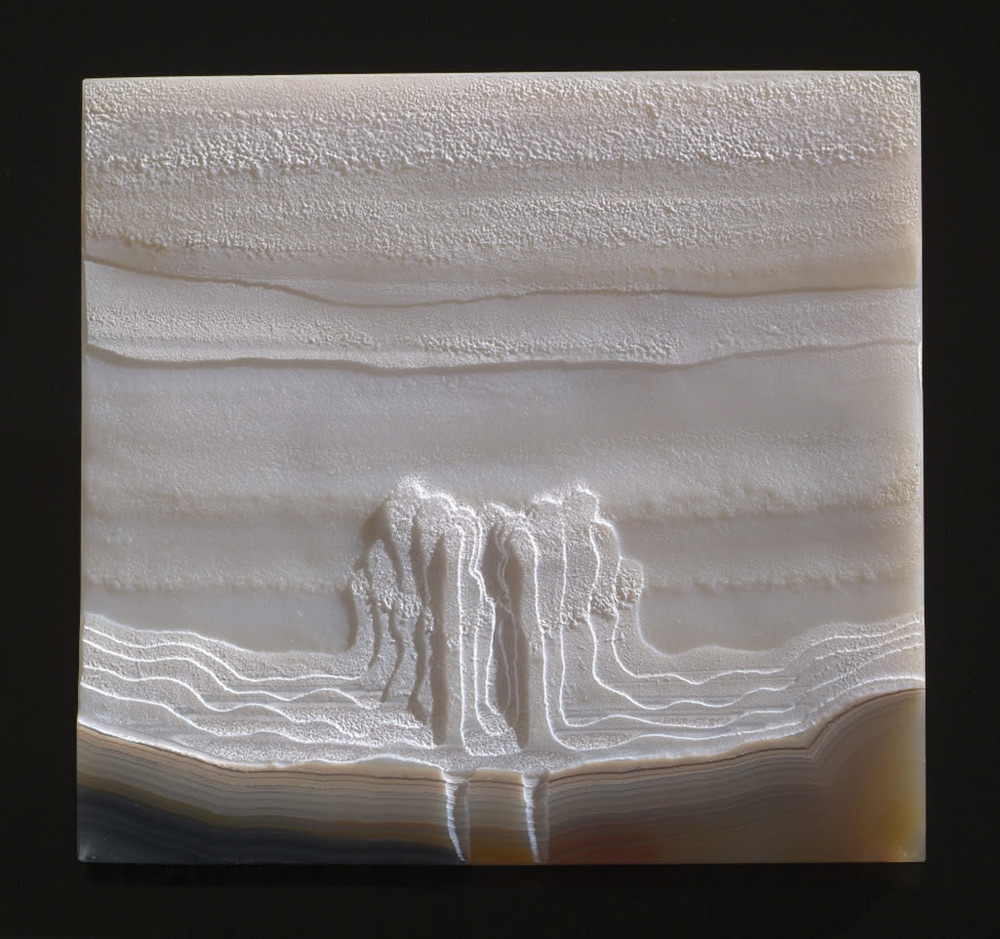
Bernd’s legacy is carried on by his family and his dedicated team. Jutta will continue to guide and lead Philipp, definitely a young star to watch. They are moving into a new era and will undoubtedly reach new heights as they build on the daring and visionary approach of Bernd Munsteiner.
